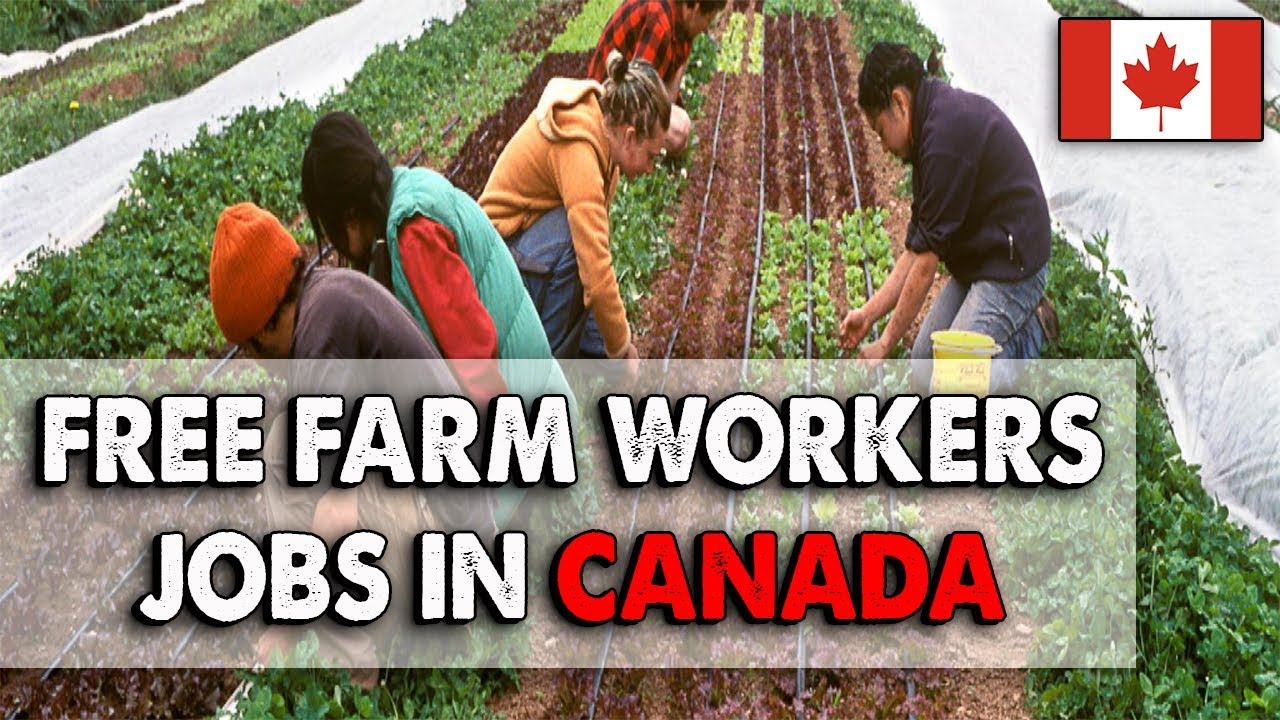Canada’s agriculture and food industry is one of the backbones of its economy, producing everything from dairy and meat to fruits, vegetables, and greenhouse crops. In 2025, this sector employs over 250,000 foreign workers each year, yet labor shortages remain one of the biggest challenges.
To fix this, the Canadian government has created dedicated immigration pathways for agriculture and agri-food workers. Whether you’re a farm supervisor, dairy hand, greenhouse worker, or meat processing technician, there are opportunities to move to Canada with the possibility of permanent residency.
Salaries in the agri-food sector typically range from CAD $33,000 at entry level to $65,000 for supervisors and specialized roles. For workers willing to relocate to rural provinces like Saskatchewan, Manitoba, and Alberta, this is one of the most realistic routes into Canada.
How Much Do Agriculture & Agri-Food Workers Earn in Canada?
Average Salaries by Role (2025)
| Role | Average Annual Salary (CAD) | Hourly Rate | Notes |
|---|---|---|---|
| General Farm Worker | $33,000 – $45,000 | $16 – $21 | Entry-level roles, no degree needed |
| Dairy Farm Assistant | $36,000 – $50,000 | $17 – $24 | Includes feeding, milking, barn work |
| Greenhouse Worker | $34,000 – $48,000 | $16 – $23 | Vegetables, flowers, herbs |
| Meat Processing Worker | $37,000 – $52,000 | $18 – $25 | Strong demand in Prairie provinces |
| Farm Supervisor | $50,000 – $65,000 | $24 – $31 | Requires leadership experience |
| Livestock Worker | $36,000 – $50,000 | $17 – $24 | Cattle, poultry, pig farms |
Regional Comparison
| Province | Average Salary Range | Cost of Living (1-bed apt/month) |
|---|---|---|
| Ontario | $34,000 – $52,000 | $1,600 – $2,000 |
| British Columbia | $36,000 – $55,000 | $1,800 – $2,300 |
| Alberta | $38,000 – $58,000 | $1,400 – $1,900 |
| Saskatchewan | $34,000 – $50,000 | $1,000 – $1,300 |
| Manitoba | $33,000 – $48,000 | $1,100 – $1,400 |
| Atlantic Provinces | $32,000 – $46,000 | $900 – $1,200 |
Alberta often pays the highest salaries for farm supervisors and meat processing workers, while Saskatchewan and Manitoba offer lower living costs.
Jobs in Demand in 2025
Canada’s agri-food sector covers a wide range of occupations. In 2025, the highest-demand jobs are:
-
Farm Supervisors – overseeing crop and livestock operations.
-
Dairy Farm Assistants – handling milking, feeding, and maintenance.
-
Meat Processing Workers – slaughterhouse and packaging plants.
-
Greenhouse Workers – planting, harvesting, pest control, maintenance.
-
General Farm Workers – seasonal planting and harvesting labor.
-
Livestock Workers – poultry, cattle, pig farming support.
-
Butchers & Industrial Meat Cutters – critical shortage across Prairie provinces.
Immigration Pathways for Agriculture & Agri-Food Workers
1. Agri-Food Pilot (Direct PR Pathway)
-
Launched in 2020, extended through 2025.
-
Designed for non-seasonal agriculture jobs.
-
Eligible roles: farm supervisors, livestock workers, meat processing staff, and greenhouse workers.
-
Requirements:
-
1 year of full-time Canadian work experience in agri-food.
-
CLB 4 (basic English/French).
-
High school diploma or higher.
-
Job offer must be non-seasonal.
-
-
Leads directly to permanent residency.
2. Seasonal Agricultural Worker Program (SAWP)
-
For workers from countries like Mexico, Jamaica, Guatemala.
-
Allows you to work up to 8 months per year.
-
Housing usually provided by employer.
-
Renewable each year but does not directly lead to PR.
3. Temporary Foreign Worker Program (TFWP – Agriculture Stream)
-
Employers can hire foreign farm workers with LMIA approval.
-
Work permits usually last 2 years.
-
After gaining experience, workers can apply to Agri-Food Pilot or PNP.
4. Provincial Nominee Programs (PNPs)
Some provinces actively nominate farm workers:
-
Saskatchewan Farm Worker Stream
-
Alberta Rural Renewal Stream
-
Ontario Employer Job Offer – In-Demand Skills Stream (includes farm jobs)
-
Atlantic Immigration Program (AIP) – for farm and food processing workers.
Step-by-Step Application Guide
Step 1: Find an Employer
-
Use Job Bank Canada and filter for “LMIA Approved” jobs.
-
Apply directly to farms, dairies, or food processing plants.
Step 2: Get a Job Offer
-
Contract should state: wages, hours, housing, and duration.
-
Minimum pay must meet provincial wage standards.
Step 3: Employer Applies for LMIA
-
Employer proves they need a foreign worker.
-
You’ll get an LMIA confirmation to support your visa.
Step 4: Apply for Work Permit
-
Submit online via IRCC.
-
Required documents:
-
Passport
-
LMIA letter
-
Job offer
-
Proof of funds
-
Medical exam (mandatory for food/agriculture workers)
-
Police certificate
-
Step 5: Travel to Canada
-
Present approval letter at airport.
-
Receive your work permit on arrival.
Step 6: Gain Work Experience
-
Work for at least 1 year full-time in eligible roles.
Step 7: Apply for Permanent Residency
-
Use the Agri-Food Pilot or PNP.
-
Submit PR application with proof of experience, language test (CLB 4+), and job offer.
Benefits of Agriculture & Agri-Food Immigration
-
Accessible entry – no degree required for many jobs.
-
PR opportunities – Agri-Food Pilot directly leads to permanent residency.
-
Housing provided – many employers include accommodation.
-
Stable jobs – demand is year-round in meat processing and dairy farms.
-
Pathway for families – spouse work permits, free schooling for kids.
Challenges for Immigrants
-
Rural locations – farms are far from major cities.
-
Physically demanding work – long hours, repetitive tasks, heavy lifting.
-
Seasonal contracts – not all jobs lead to PR (e.g., SAWP is temporary only).
-
Harsh weather – winter farming in Canada can be tough.
-
Language barrier – English/French needed for long-term settlement.
Conclusion
In 2025, Canada’s agriculture and agri-food sector is one of the most accessible immigration pathways, especially for those without advanced degrees. With salaries ranging from $33,000 to $65,000 per year, visa sponsorship, and the Agri-Food Pilot program offering direct permanent residency, farm and food industry jobs are a realistic gateway into Canada.
If you’re willing to work hard and adapt to rural life, agriculture could be your stepping stone to a stable future in Canada. The opportunities are here — it’s about taking the first step.


